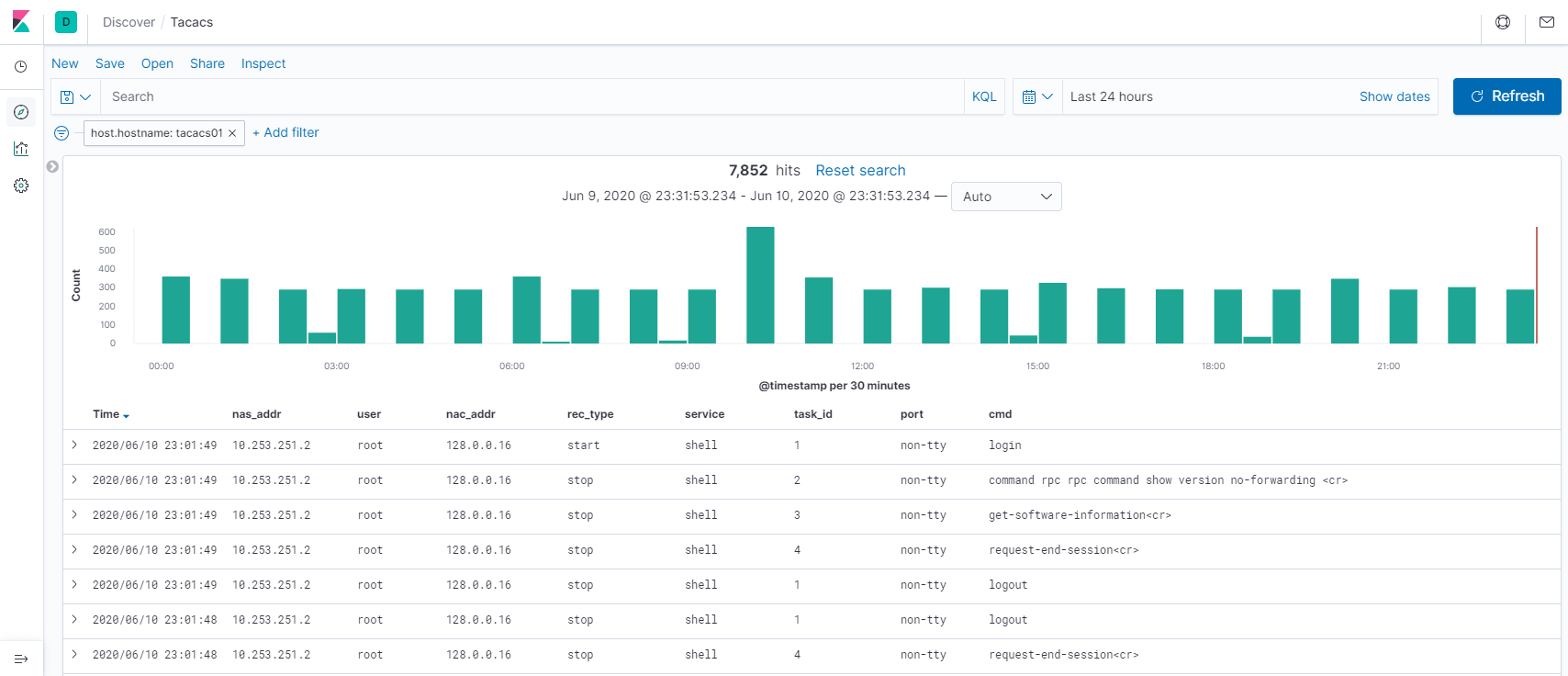We run a tac_plus TACACS+ server, and ingest the access and accounting data into an ELK stack. Following is a short run-through on parsing the logging data into logstash.
Let’s look at a few logging lines:
# login to a networking device at 10.10.251.20 from 10.10.248.8 by joe.user 2020-06-10 15:05:55 +1000 10.10.251.20 joe.user 10.10.248.8 shell login succeeded # command executed on a Juniper device 2020-06-10 15:06:01 +1000 10.10.251.20 joe.user ttyp1 10.253.10.8 stop task_id=3 service=shell session_pid = 21075 cmd=show interfaces <cr> # command executed on a Cisco device 2020-06-10 06:03:22 +1000 10.10.253.48 joe.user tty2 10.10.253.100 stop task_id=336970 timezone=AEST service=shell start_time=1591733002 priv-lvl=15 cmd=configure terminal <cr>
Taken from http://www.pro-bono-publico.de/projects/tac_plus.html
The following pattern matches the first six tokens:
Accounting records are text lines containing tab-separated fields. The first 6 fields are always the same. These are:
Following these, a variable number of fields are written, depending on the accounting record type. All are of the form attribute=value. There will always be a task_id field.
- timestamp
- NAS address
- username
- port
- NAC address
- record type
NOT_TAB ([^\t]+)
NOT_TAB2 ([^\t]*)
TACACS_DATE %{YEAR:year}-%{MONTHNUM:month}-%{MONTHDAY:day} %{TIME:time} %{ISO8601_TIMEZONE}
TACACS_PREFIX %{TACACS_DATE:tac_timestamp}\t%{NOT_TAB2:nas_addr}\t%{NOT_TAB2:user}\t%{NOT_TAB2:port}\t%{NOT_TAB2:nac_addr}\t%{NOT_TAB2:rec_type}
Then we can use in the following logstash filter:
filter {
if [fields][document_type] == "tacacs" {
kv {
allow_duplicate_values => false
field_split => "\t"
}
grok {
patterns_dir => ["/etc/logstash/conf.d/patterns"]
match => ["message", "%{TACACS_PREFIX}"]
}
date {
match => ["tac_timestamp", "YYYY-MM-dd HH:mm:ss Z"]
}
}
}
We extract all the key=value fields, extract the six fields of the common prefix, and overwrite the date data.

